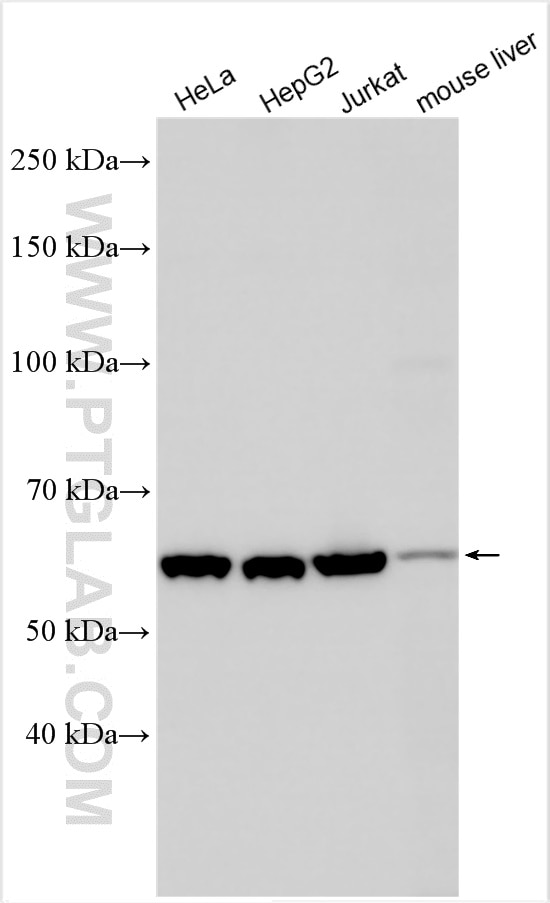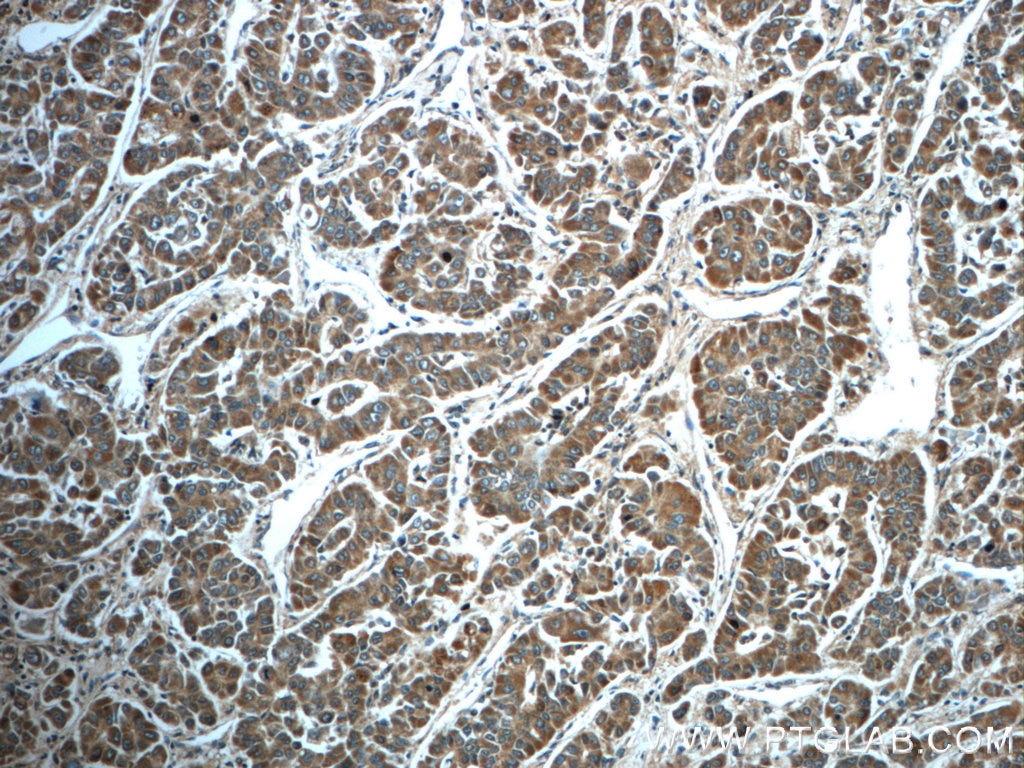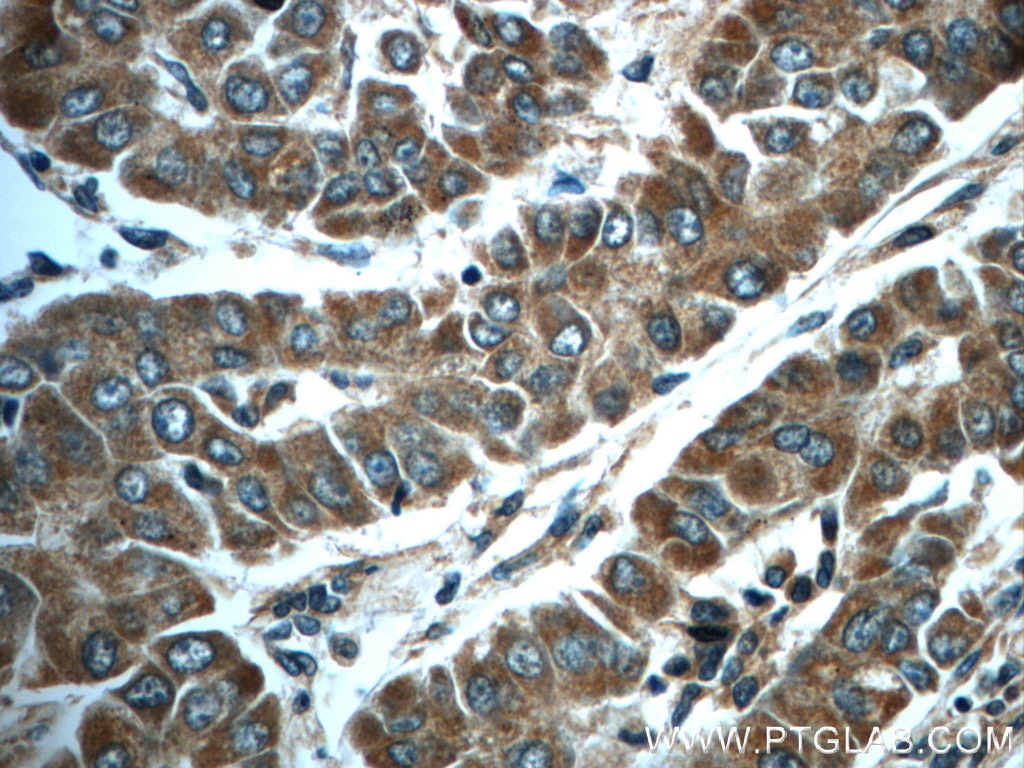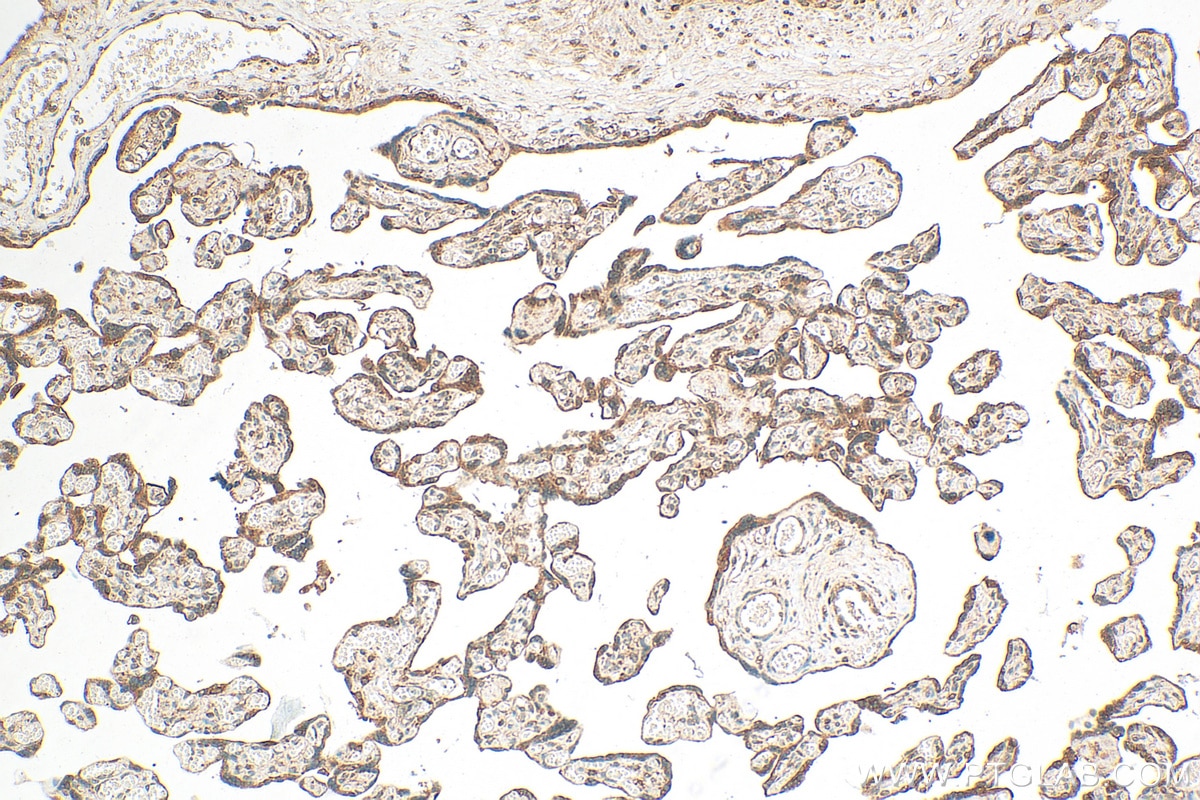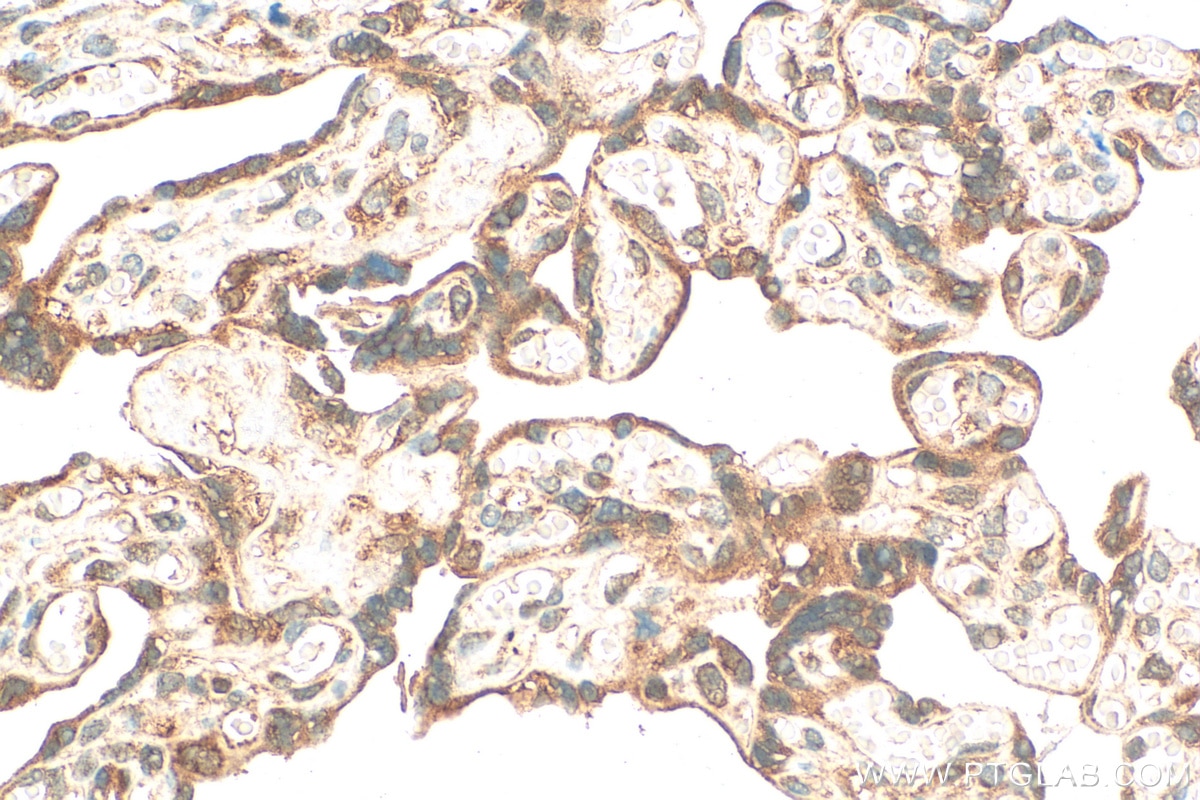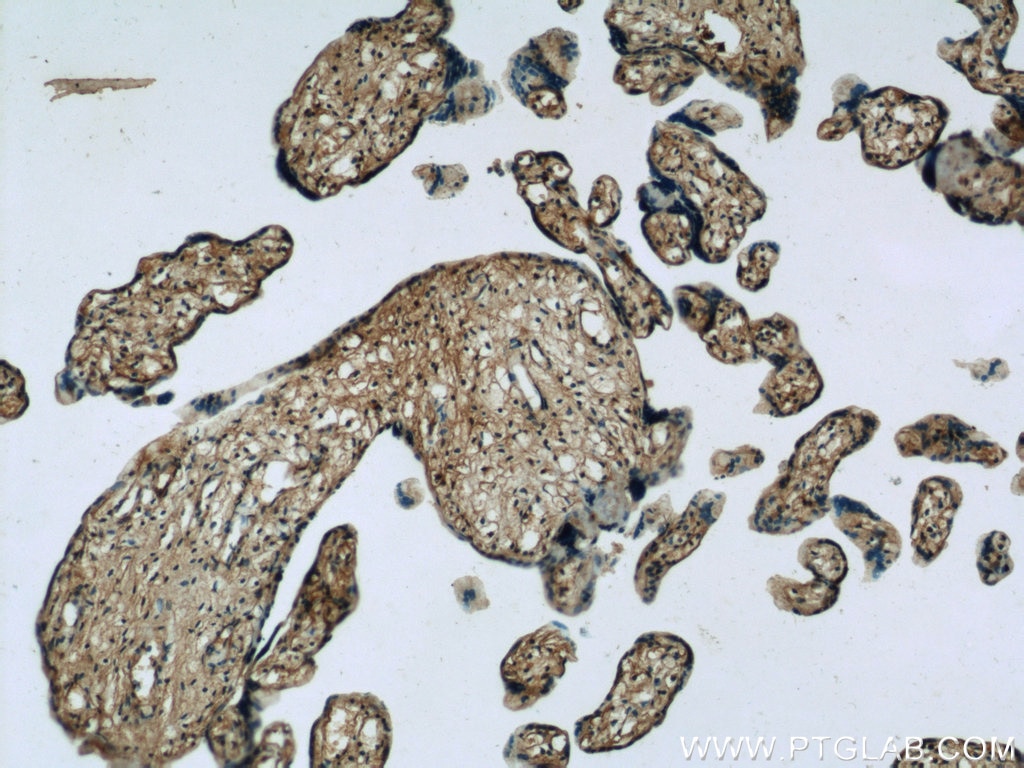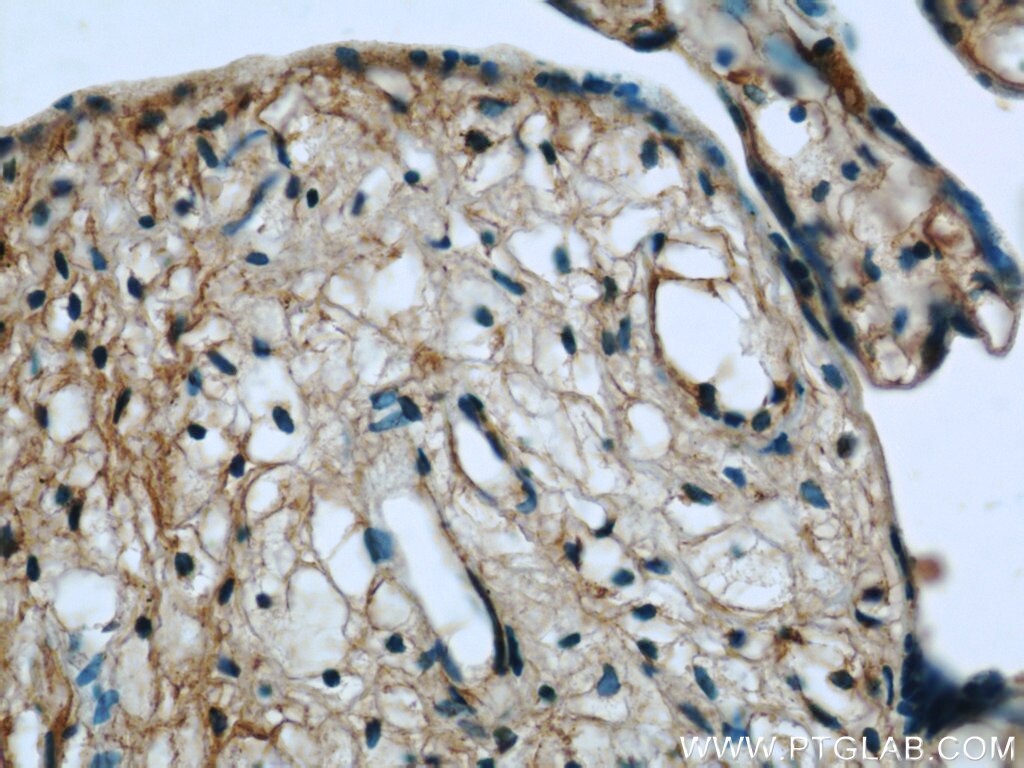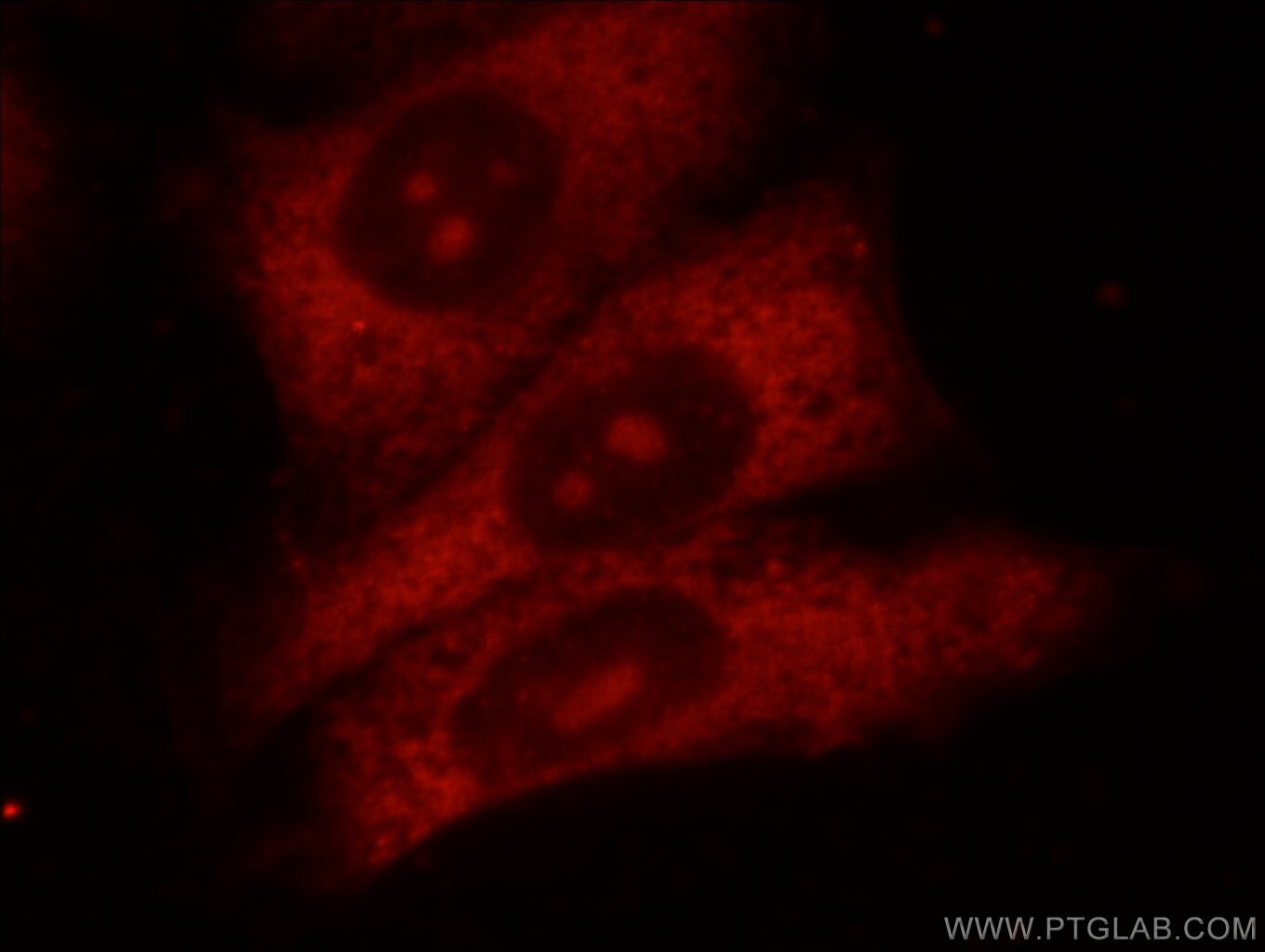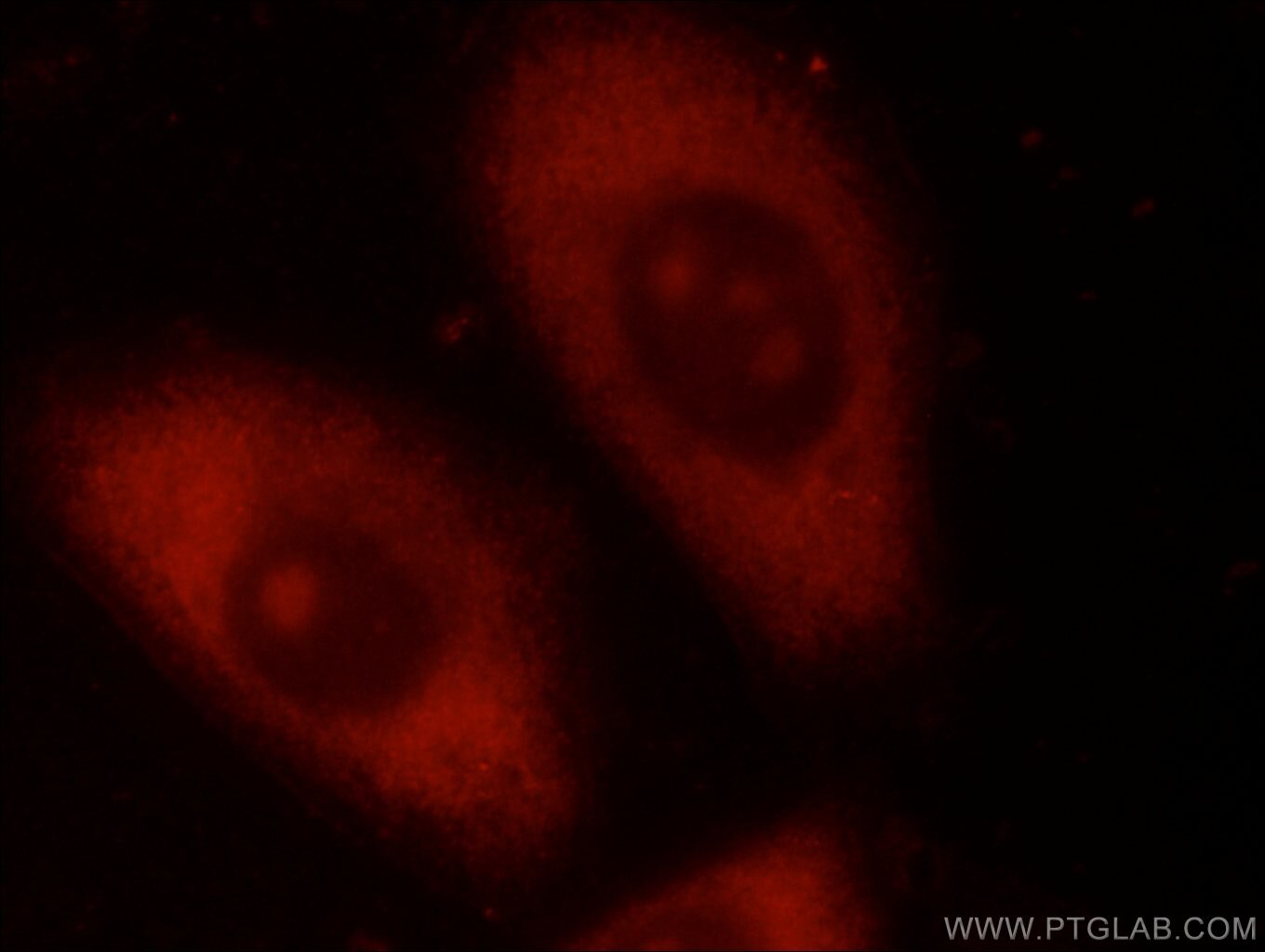Anticorps Polyclonal de lapin anti-HPSE
HPSE Polyclonal Antibody for WB, IHC, IF/ICC, ELISA
Hôte / Isotype
Lapin / IgG
Réactivité testée
Humain, souris et plus (1)
Applications
WB, IHC, IF/ICC, ELISA
Conjugaison
Non conjugué
N° de cat : 24529-1-AP
Synonymes
Galerie de données de validation
Applications testées
| Résultats positifs en WB | cellules HeLa, cellules HepG2, cellules Jurkat, tissu hépatique de souris |
| Résultats positifs en IHC | tissu de cancer du foie humain, tissu placentaire humain il est suggéré de démasquer l'antigène avec un tampon de TE buffer pH 9.0; (*) À défaut, 'le démasquage de l'antigène peut être 'effectué avec un tampon citrate pH 6,0. |
| Résultats positifs en IF/ICC | cellules HeLa, cellules HepG2 |
Dilution recommandée
| Application | Dilution |
|---|---|
| Western Blot (WB) | WB : 1:1000-1:8000 |
| Immunohistochimie (IHC) | IHC : 1:20-1:200 |
| Immunofluorescence (IF)/ICC | IF/ICC : 1:10-1:100 |
| It is recommended that this reagent should be titrated in each testing system to obtain optimal results. | |
| Sample-dependent, check data in validation data gallery | |
Applications publiées
| WB | See 10 publications below |
| IHC | See 5 publications below |
| IF | See 1 publications below |
Informations sur le produit
24529-1-AP cible HPSE dans les applications de WB, IHC, IF/ICC, ELISA et montre une réactivité avec des échantillons Humain, souris
| Réactivité | Humain, souris |
| Réactivité citée | rat, Humain, souris |
| Hôte / Isotype | Lapin / IgG |
| Clonalité | Polyclonal |
| Type | Anticorps |
| Immunogène | HPSE Protéine recombinante Ag21479 |
| Nom complet | heparanase |
| Masse moléculaire calculée | 543 aa, 61 kDa |
| Poids moléculaire observé | 60 kDa |
| Numéro d’acquisition GenBank | BC051321 |
| Symbole du gène | HPSE |
| Identification du gène (NCBI) | 10855 |
| Conjugaison | Non conjugué |
| Forme | Liquide |
| Méthode de purification | Purification par affinité contre l'antigène |
| Tampon de stockage | PBS with 0.02% sodium azide and 50% glycerol |
| Conditions de stockage | Stocker à -20°C. Stable pendant un an après l'expédition. L'aliquotage n'est pas nécessaire pour le stockage à -20oC Les 20ul contiennent 0,1% de BSA. |
Informations générales
HPSE(Heparanase) is also named as HEP, HPA, HPA1, HPR1, HPSE1, HSE1 and belongs to the glycosyl hydrolase 79 family. It is a endoglycosidase that cleaves heparan sulfate proteoglycans (HSPGs) into heparan sulfate side chains and core proteoglycans. HPSE is essential in the disassembly of the extracellular matrix (ECM) by invading cells. It has 3 isoforms produced by alternative splicing with the molecular weight of 61 kDa, 55 kDa and 53 kDa. The full length protein has six glycosylation sites. The cleavage of the 65 kDa form leads to the generation of a linker peptide, and 8 kDa and 50 kDa products. The active form, the 8/50 kDa heterodimer, is resistant to degradation and glycosylation of the 50 kDa subunit appears to be essential for its solubility.
Protocole
| Product Specific Protocols | |
|---|---|
| WB protocol for HPSE antibody 24529-1-AP | Download protocol |
| IHC protocol for HPSE antibody 24529-1-AP | Download protocol |
| IF protocol for HPSE antibody 24529-1-AP | Download protocol |
| Standard Protocols | |
|---|---|
| Click here to view our Standard Protocols |
Publications
| Species | Application | Title |
|---|---|---|
J Control Release cRGD-targeted heparin nanoparticles for effective dual drug treatment of cisplatin-resistant ovarian cancer | ||
EMBO Rep CircHIPK3 sponges miR-558 to suppress heparanase expression in bladder cancer cells. | ||
Br J Cancer Shed Syndecan-1 is involved in chemotherapy resistance via the EGFR pathway in colorectal cancer. | ||
Neural Regen Res Reducing LncRNA-5657 expression inhibits the brain inflammatory reaction in septic rats. | ||
Diabetes Res Clin Pract Heparanase-driven inflammation from the AGEs-stimulated macrophages changes the functions of glomerular endothelial cells. | ||
Exp Ther Med MicroRNA-219a-2-3p modulates the proliferation of thyroid cancer cells via the HPSE/cyclin D1 pathway. |
Avis
The reviews below have been submitted by verified Proteintech customers who received an incentive for providing their feedback.
FH Fabio Henrique (Verified Customer) (01-17-2019) | Figure 1. IF of HPSE (red) and CD68 (green) in 3D coculture of C4-2B and primary human macrophages. C4-2B and primary human macrophages were encapsulated in a 3D hydrogel, composed of hyaluronic acid and collagen type 1, and cocultured for 5 days. On day 5, cells were fixed in 4% paraformaldehyde for 10 minutes, washed with PBSTritonX 0.3% for 3x 5min and blocked in PBS 10% Goat serum, 1% BSA, for 1 hr at RT. Anti-HPSE was used at 1:100 in blocking buffer, overnight incubation at 4*C. Secondary antibodies AlexaFluor 488 and 568 were used at 1:500 for 1 hr at RT. Imaged using a Nikon A1 confocal microscope. Figure 2: HPSE (red) and CD68 (green) in Grade 3 Endometrial cancer tissue (Frozen). Staining was performed as described above, except secondary antibodies were used at 1:1000. This antibody did not perform well in WB (data not shown).
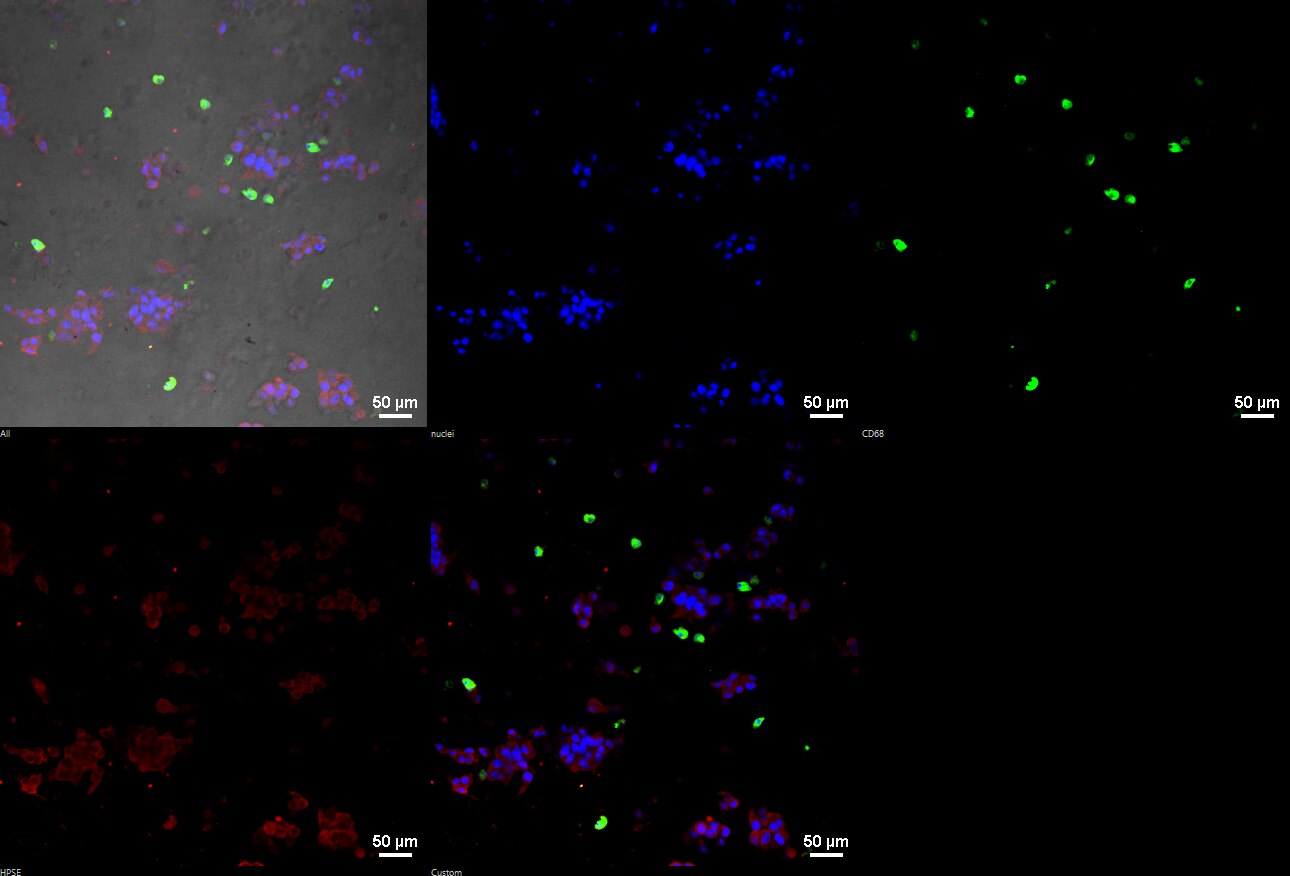 |
